MTR
Mass Transit Railway, short: MTR (Chinese 港鐵 / 港铁, Pinyin Gǎngtiě, Jyutping Gong2tit3 - "[Hong] Kong Railway", from 1979-2007: 香港地鐵 / 香港地铁, Xiānggǎng Dìtiě, Jyutping Hoeng1gong2 Dei6tit3 - "Hong Kong Subway"), is the name of Hong Kong's subway system. The first line, the Kwun Tong Line, opened in 1979. Privatized in October 2000, its shares are traded on the Hong Kong Stock Exchange and listed on the Hang Seng Index. In 2007, the merger of Hong Kong's two railway companies merged the rail network (Heavy Rail, German roughly "heavy rail transport", 重鐵 / 重铁 - "mainline") and Light Rail Transit, or LRT (a.k.a. Light Rail, German roughly "light rail transport", 輕鐵 / 轻铁 - "light railway"), of the Kowloon-Canton Railway (KCR) with the subway network of the MTR Corporation (MTRC). Today (as of 2018), the combined network (excluding "light rail" services) comprises eleven lines with a total of 113 stops (99 of which are subway) and a total length of approximately 231 km. On weekdays, the MTR carries an average of about 5.76 million passengers. Since the merger in 2007, all of Hong Kong's rail services are operated by the MTR Corporation, except for the Hong Kong Tramways tram lines on the north coast of Hong Kong Island.
MTR is one of the founding members of the Community of Metros metro benchmarking system.
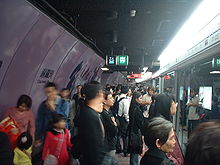
Causeway Bay Station

MTR train at Lo Wu station
Line network
The MTR network consists of the following lines:
| Name | Color | Route | Expansion | Opening | Length | Hold it. | Travel time² | Depot | track width | Power | Control Center |
| Heavy Rail Net | |||||||||||
| East Rail Line¹ | Light blue | Hung Hom ↔ Lo Wu/Lok Ma Chau | 2021 | 1 Oct. 1910 | 34 km | 14 | 42/45 min | Ho Tung Lau | 1435 mm | AC 25000V | Tsing Yi |
| Kwun Tong Line | Green | Whampoa ↔ Tiu Keng Leng | N/A | 1 Oct. 1979 | 18.4 km | 17 | 35 min | Kowloon Bay | 1432 mm | DC 1500V | Tsing Yi |
| Tsuen Wan Line | Red | Tsuen Wan ↔ Central | N/A | May 17, 1982 | 16 km | 16 | 30 min | Tsuen Wan | 1432 mm | DC 1500V | Tsing Yi |
| Island Line | Blue | Kennedy Town ↔ Chai Wan | N/A | 31 May 1985 | 16.3 km | 17 | 34 min | chai wan | 1432 mm | DC 1500V | Tsing Yi |
| Tung Chung Line | Orange | Hong Kong ↔ Tung Chung | 2026 | Jun 21, 1998 | 31.1 km | 8 | 27 min | Siu Ho Wan | 1432 mm | DC 1500V | Tsing Yi |
| The Airport Express | Turquoise | Hong Kong ↔ AsiaWorld-Expo | N/A | July 6, 1998 | 35.2 km | 5 | 28 min | Siu Ho Wan | 1432 mm | DC 1500V | Tsing Yi |
| Tseung Kwan O Line | Purple | North Point ↔ Po Lam/LOHAS Park | 2026 | 18 Aug. 2002 | 11.9 km | 8 | 15/20 min | LOHAS Park | 1432 mm | DC 1500V | Tsing Yi |
| West Rail Line | Purple | Hung Hom ↔ Tuen Mun | 2019 | 20 Dec. 2003 | 35.4 km | 12 | 37 min | Pat Heung | 1435 mm | AC 25000V | Tsing Yi |
| Ma On Shan Line | Brown | Wu Kai Sha ↔ Tai Wai | 2019 | 21 Dec 2004 | 11.4 km | 9 | 16 min | Tai Wai | 1435 mm | AC 25000V | Tsing Yi |
| Disneyland Resort Line | Purple | Sunny Bay ↔ Disneyland Resort | N/A | 1 Aug. 2005 | 3,3 km | 2 | 4,5 min | Siu Ho Wan | 1432 mm | DC 1500V | Tsing Yi/Sunny Bay |
| South Island Line | Light green | Admiralty ↔ South Horizons | N/A | 28 Dec. 2016 | 7.4 km | 5 | 11 min | Wong Chuk Hang | 1435 mm | DC 1500V | Tsing Yi |
| Light Rail Network | |||||||||||
| Light Rail (12 lines) | Olive Green | miscellaneous | N/A | 18 Sep 1988 | 36.2 km | 68 | miscellaneous | Tuen Mun | 1435 mm | DC 750V | Tuen Mun |
Annotation: ¹Electrification 1982-83 by KCR, ²Total line running time with intermediate stops.
The oldest line is the East Rail Line. It ran from East Tsim Sha Tsui in Kowloon to Lo Wu or Lok Ma Chau in the New Territories and became part of the MTR through the takeover of KCRC (Kowloon-Canton Railway Corporation) in 2008 together with the West Rail Line and the Ma On Shan Line. In August 2009, the line was shortened to Hung Hom. The East Tsim Sha Tsui station is now served by the West Rail Line.
The Kwun Tong Line runs its entire length in Kowloon. The Tsuen Wan Line runs from Central Station on Hong Kong Island through the center of Kowloon to the northwestern district of Tsuen Wan.
The Island Line provides access to the densely populated areas along the north coast of Hong Kong Island.
The Airport Express and the Tung Chung Line both start on Hong Kong Island, cross the west of Kowloon and reach Lantau Island together; there they branch off and lead to HongKong International Airport and the Tung Chung residential area.
The Tseung Kwang O Line connects Hong Kong Island with the east of Kowloon, using the Eastern Harbour Tunnel.
The South Island Line opens up the rather sparsely populated southern part of Hong Kong Island. Through the transfer option in Admiral, this part is now completely connected to the line network.
Still in the planning stage is the West Island Line, which is to open up the western part of Hong Kong Island.
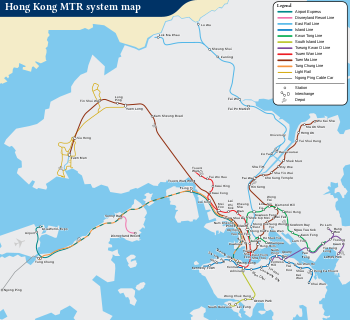
Route network map (2016)
History
The first plans
During the 1960s, the Hong Kong government assumed that traffic volumes would increase sharply due to strong economic growth. It commissioned the British consulting firm Freeman, Fox, Wilbur Smith & Associates to prepare a study on the future transport system for Hong Kong. The firm published the "Hong Kong Mass Transport Study" in September 1967, in which it proposed the construction of an underground mass transit system.
In 1970, a continuation study entitled "Hong Kong Transit: Further Studies" proposed four lines, the Kwun Tong Line, the Tsuen Wan Line, the Island Line and the East Kowloon Line. The MTR lines have retained their names from the planning stage to the present day, although the routing from the designs differs from that of today.
In 1972, the Hong Kong government granted permission to build a 20-kilometre basic network (initial system), consisting of most of today's Kwun Tong Line. Negotiations with four major construction consortia began in 1973. The government's intention was to award the entire project in one piece and at a fixed price. A consortium from Japan signed an agreement in early 1974, but then withdrew in December of the same year.
Changes to the basic network
A few weeks later, in early 1975, a department called the Mass Transport Provisional Authority was created to take charge of the project. It announced that the basic network would be shortened to 15.6 kilometres and named the Modified Initial System. The intention to hand over execution to a single consortium was dropped. Instead, 25 separate construction contracts were signed, along with ten electrical and mechanical contracts. In addition, the state-owned Hong Kong Mass Transit Railway Corporation (MTRC) was established, replacing the Mass Transport Provisional Authority.
Construction of the modified basic network began in November 1975. On October 1, 1979, the Kwun Tong Line began operation between the Shek Kip Mei and Kwun Tong stations. This line was built partly underground partly above ground on a viaduct, which saved considerable costs. Already on 31 December 1979 the line could be extended from Shek Kip Mei to Tsim Sha Tsui. On 12 February 1980 a further extension followed under the harbour basin to the station Chater (today Central) on Hong Kong Island.
Tsuen Wan Line
In 1977, the government approved the construction of the Tsuen Wan Line (then called the Tsuen Wan Extension); construction began in November 1978. This project added a 10.5 kilometre section from Prince Edward to Tsuen Wan to the MTR system. The cost was 4.1 billion Hong Kong dollars.
When this line started operation on 10 May 1982, the existing line between Chater (now Central) to Argyle (now Mong Kok) stations was transferred to the Tsuen Wan Line. This meant that Waterloo (now Yau Ma Tei) was now the new terminus of the Kwun Tong Line. Both Argyle and Prince Edward now had the function of a transfer station. This change happened because planners assumed that passenger traffic on the Tsuen Wan Line would be greater than on the Kwun Tong Line. After 1998, however, much of the traffic northwest of Lai King shifted to the new Tung Chung Line.
The planned Tsuen Wan West station has not been built to date, despite land purchases already made. The site is now partly used by the West Rail line of the Kowloon Canton Railway Corporation.
Island Line
Official approval for the construction of the Island Line was granted in December 1980 and construction began in October 1981. The section between Admiralty and Chai Wan was opened on 31 May 1985; it was now possible to change to the Tsuen Wan Line at the Admiralty and Central stations. The extension to Sheung Wan took place on 23 May 1986. The construction of this section had been delayed by one year because government buildings above the planned station had to be demolished first.
Extension under the eastern harbour basin
In 1984, the government approved the construction of the Eastern Harbour Tunnel, a combined motor vehicle and subway tunnel under the eastern part of Victoria Harbour. The Kwun Tong Line was extended from Kwun Tong in Kowloon to Quarry Bay on Hong Kong Island. This created a new interchange in the eastern section of the Island Line. The extension entered service 5 August 1989, followed by an intermediate stop at Lam Tin on 1 October 1989.
Airport Express and Tung Chung Line
In October 1989, the decision was made to build a new international airport on Chek Lap Kok near Lantau Island to replace the congested Kai Tak Airport. The government commissioned the MTR to build a rail link, then called the Lantau Airport Railway.
But construction work did not begin until November 1994, after the People's Republic of China and Great Britain had agreed on the method of financing. Because the new airport could not have been operated economically without a rail link, the two projects were financed jointly. The MTR contributed half of the construction costs of the railway line and in return received permission to build large superstructures at the new stations.
The operation of the Airport Express could start on July 6, 1998, simultaneously with the new airport. The Tung Chung Line for local traffic in Kowloon and on Lantau had already been opened on June 21 by Chief Executive Tung Chee-hwa.
Relief for Quarry Bay Station
This project involved the extension of the Kwun Tong Line on Hong Kong Island from Quarry Bay to North Point. It had become necessary because passengers increasingly complained about the overcrowding at the Quarry Bay stations, as well as the long walk when transferring between the Kwun Tong Line and the Island Line. Construction work began in September 1997 and was completed in September 2001.
Tseung Kwan O Line
Construction of the Tseung Kwan O Line was approved on August 18, 1998, and construction began on April 24, 1999. The new line, which runs from Po Lam to North Point, was opened to traffic on August 18, 2002. The Kwun Tong Line was diverted to Tiu Keng Leng station at the same time, as the new line took over the existing section under the harbour basin to Hong Kong Island. The Tseung Kwan O Line has been partly privately funded as it has enabled the development of a previously underdeveloped area and led to the construction of a new residential and commercial district.
Extensions
The MTR system has been extended several times since the merger. Relevant projects include the LOHAS Park spur line (2009), the Kowloon Southern Link (2009), the West Island Line (2014), the Kwun Tong Line Extension (2016) and the South Island Line (2016).
The LOHAS Park Spur Line is an extension of the Tseung Kwan O Line, which branches off after Tseung Kwan O Station. It serves the new residential development of LOHAS Park (formerly "Dream City"), a 330,000 m² site with fifty residential towers. The project is divided into 9 to 13 phases and is about half complete as of 2016. These high-rises are located above LOHAS Park Station, which opened on July 26, 2009.
The West Island Line, first submitted to the government on 21 January 2003, is an extension of the Island Line. It serves the western district of Hong Kong Island. Construction of the West Island Line began on 10 August 2009, with Kennedy Town and HKU stations opening on 28 December 2014. Sai Ying Pun station was opened later on 29 March 2015 due to construction delays.
A proposal to extend the existing Kwun Tong Line to Whampoa Garden was made in April 2006 and approved in March 2008 as part of the Sha Tin to Central Link bid. Two new stations at Whampoa and Ho Man Tin were opened on 23 October 2016.
The South Island Line opened between Admiralty and South Horizons on 28 December 2016, connecting the Southern District with the MTR for the first time. With the opening of the South Island Line, all 18 districts of Hong Kong are served by the MTR.
Protests in Hong Kong
On July 21, 2019, hundreds of white-clad mobs carrying wooden sticks and metal pipes entered MTR's Yuen Long and indiscriminately attacked people. It is widely believed that the attack was carried out by pro-Beijing paid thugs. A pregnant woman was found lying injured on the ground and journalists were also attacked. The mob entered the paid area and attacked commuters aboard a train that failed to leave. Over 40 people were hospitalised. After the incident, pro-Beijing lawmaker Junius Ho was accused of aiding the attack.
On August 31, 2019, Hong Kong Police Special Tactics officers entered the Prince Edward during a protest and assaulted people inside. Tear gas was fired by police in enclosed spaces, including on the trains themselves. Innocent passengers were caught in the operation and it was widely seen as a brutal attempt to stop the protests. There were unconfirmed rumours of suspicious deaths at the hands of the police after discrepancies emerged regarding the number of injuries as a result of the operation.
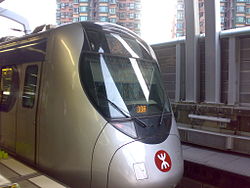
Train type SP1950
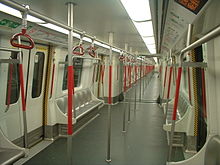
Train type K
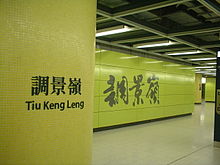
Tiu Keng Leng Station
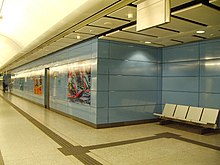
Olympic Station
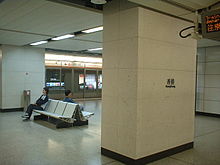
Hong Kong Station
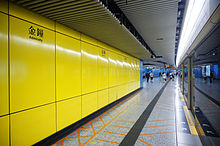
Admiralty Station
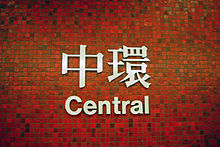
Station Central

Station Prince Edward
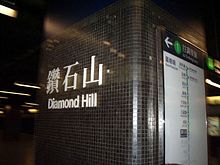
Diamond Hill Station
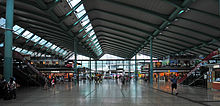
Hung Hom Station
Questions and Answers
Q: What is the Mass Transit Railway?
A: The Mass Transit Railway (MTR) is the main rapid transit railway system in Hong Kong.
Q: When did MTR service first open?
A: MTR service first opened in 1979.
Q: How many stations are there on the MTR network?
A: There are more than 150 stations on the MTR network.
Q: Who runs the MTR system?
A: The MTR system is run by MTR Corporation Limited.
Q: How popular is public transport in Hong Kong?
A: Public transport in Hong Kong is very popular, with around 2.46 million passengers riding each day.
Search within the encyclopedia